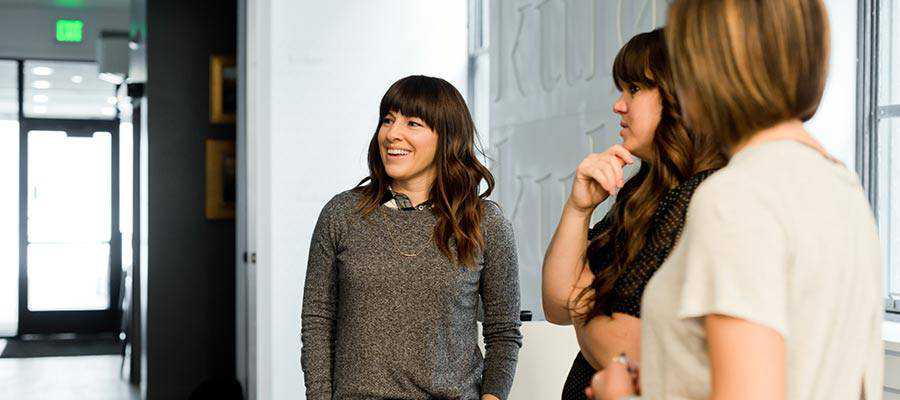Finding Your Comfort Zone with Clients
Being a freelance web designer means more than just focusing on graphics and code. It also requires communicating with both current and prospective clients.
The thing is, we can take any number of courses to help us learn a new app or programming language. But client relations? Those skills aren’t quite as easy to pick up.
New designers are often unprepared for this part of the job. Back when I started, I certainly wasn’t ready for what I was about to face. And it took years to even begin to figure things out.
While I’m far from perfect, I have learned some valuable lessons about gaining comfort and confidence with clients. Want to know more? Keep on reading for some tips you can use in your day-to-day interactions.
Being Yourself Makes a Difference
When communicating with clients, you might feel the need to show just how smart and talented you are. This can lead to overdoing it in a manner that takes you away from your authentic self.
For instance, there’s no need to have an immediate answer to every question a client poses. It may be tempting to use the old “fake it ‘til you make it” way of communicating, where you offer up some abstract answer that has little or no basis. Maybe it makes you sound smart. But what good does that do?
In reality, clients don’t expect you to know everything off the top of your head. So, rather than pretend to know something you don’t, take notes and promise to get back to them with accurate information. That will establish a level of trust with your client that is necessary for a successful relationship.
Beyond dealing with facts, it’s also important to create a comfortable atmosphere for a real discussion. In practice, this means avoiding hyperactive sales pitches and buzzwords. Speak with clients the same as you would a friend – just keep things polite and professional.

Meet Clients Where They Are
No, we’re not talking about geography here – in-person meetings aren’t quite the necessity they used to be. Instead, we’re looking at getting to know who your clients are as people.
One realization you’ll find over time is that no two clients are exactly alike. That makes sense as we are dealing with human beings as opposed to one-dimensional stereotypes.
Individual personalities impact how we approach communication. Therefore, giving the same spiel the same way to each client will be ineffective. Designers must adapt to a client’s personality and present information accordingly.
Technical jargon is a prime example. While it’s probably not a good idea to go too deeply into this with clients, some will inevitably be more comfortable with these terms and concepts. This doesn’t mean we should insult the intelligence of a non-technical client; it just means that things should be explained in more accessible terms.
Also, the depth of the design and development processes are of varying degrees of interest. Some clients want to know the reasons behind every decision, while others are happy to be left out of the nitty-gritty.
Clients also vary in preferred times and methods for communication. 24/7 email will do just fine for some while others insist on early morning phone calls. While you don’t want to get away from your policies, it’s still important to consider these preferences.
This isn’t to say that you shouldn’t be consistent in how you get things done. It’s just that the way you communicate them won’t be the same across the board.

Look for Common Ground
There’s much to be gained by finding some sort of common ground with your clients. And it doesn’t necessarily have to be personal – although that’s recommended, too.
The most basic is the end goal for a given project. All stakeholders should be able to define what makes for a successful outcome and work together towards achieving it. At the very least, designers should strive to meet this need.
However, we shouldn’t totally discount the benefits of something more personal. This type of connection can make the relationship even stronger. It provides another way to bond with clients and can alleviate some of the stress that will inevitably arise at various points.
Building this bond won’t require any profound personal experiences. It could be as simple as both of you being parents of small children or sharing a love of sports, books, or music. Even the smallest similarities will provide that foundation.

Aim for Fairness and Simplicity
A designer/client relationship is not one where you’re looking to gain any sort of upper hand. There’s no need to seek undue control over a client, nor should you cede control. It has to be a partnership in order to work effectively.
When one side dominates the relationship, it’s bad for everyone. If, for instance, a client is intimidating and intentionally uses this as a negotiating tactic – you’re not going to be a happy camper. You’re going to cringe every time you see an email from them and will dread doing your job.
To that end, it’s best to treat your clients fairly and expect the same from them. You’ll still have to do the hard work to please them, but you’ll likely do so with more positive motivation.
Also, look to keep things as simple as possible. Don’t involve yourself with the inner workings of someone else’s business or openly critique their staff. These things complicate the relationship and can lead to hard feelings. Everyone suffers from this type of atmosphere.
In that spirit, it’s also wise to address the bigger issues before they become major impediments. Design politics, for example, is one such area. Do your best to achieve a diplomatic resolution when possible. In other words: try to bring people together, rather than drive them apart.

Client Relations Belongs on Your List of Skills
Becoming comfortable when dealing with clients comes naturally for some, while others need a bit more practice. To be sure, it’s an entirely different skill set than what’s required to build an awesome website.
The great thing is that you don’t need to have a big, gregarious personality. More often, honesty and patience are what is needed. It’s about being yourself and taking the time to listen and learn. From there, you can adjust to match your client’s needs.
Even if you’re having trouble in this area – don’t worry. The more clients you have experience with, the more likely you are to improve your skills. Over time, these relationships will become like second nature.
The post Finding Your Comfort Zone with Clients appeared first on Speckyboy Design Magazine.





